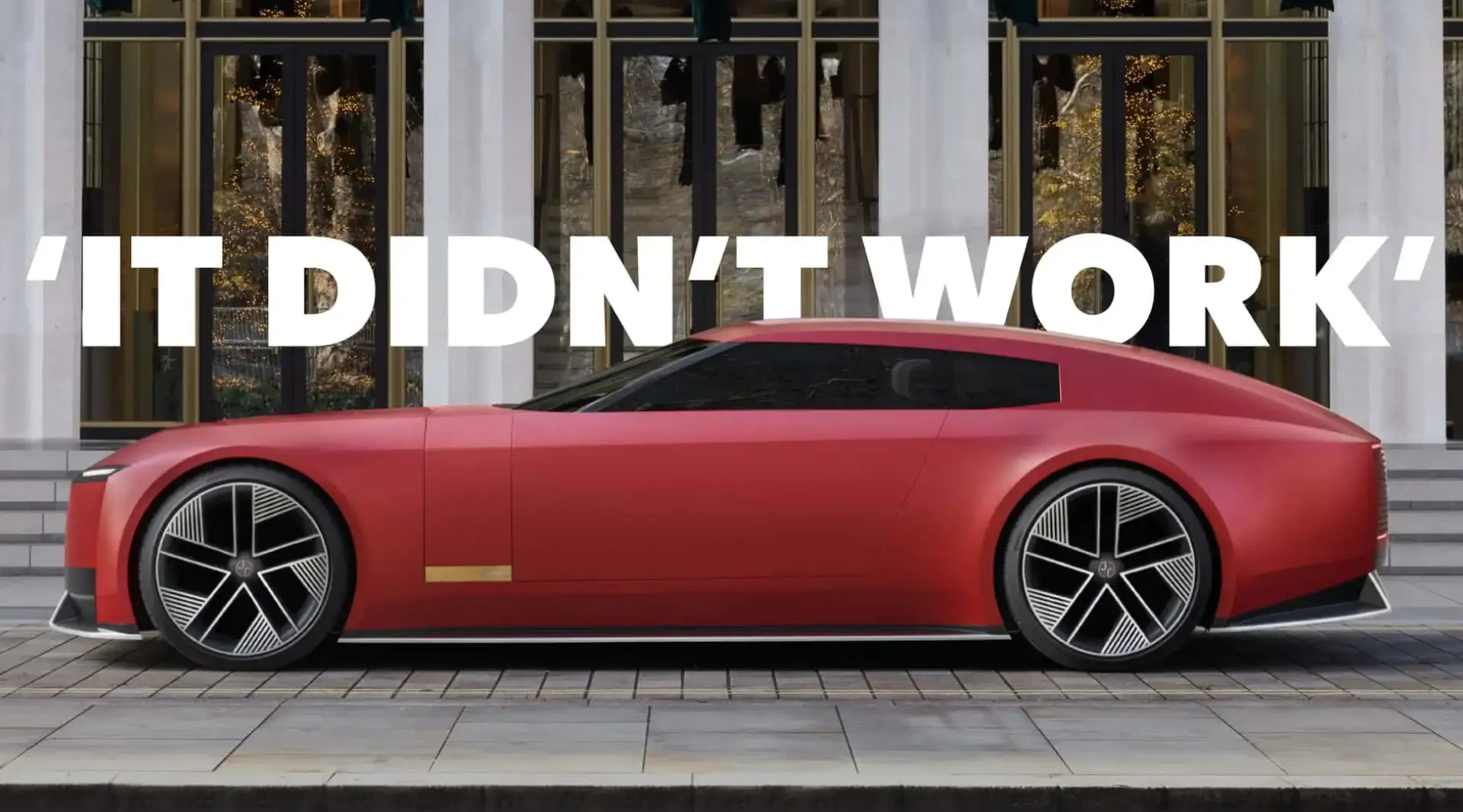Top 10 Most Subscribed YouTubers 2025 – Global Subscriber Rankings
Updated on
Published on

YouTube’s growth over the past decade has been explosive. With over 2.7 billion users worldwide and countless creators vying for attention, only a select few channels have climbed to the very top. In this article, we’ll count down the top 10 most subscribed YouTube channels of 2025 and explore what makes each unique. These top YouTube channels span a variety of genres – from kids’ cartoons and music videos to big-budget stunts – reflecting how diverse content can attract hundreds of millions of subscribers. Whether you’re curious about the YouTube subscriber rankings or a fan looking to learn more about your favorite creator’s success, read on to discover the biggest YouTube stars of 2025 and the stories behind their meteoric rise.
(Subscriber counts are approximate as of mid-2025.)
- Richest Youtuber in 2025
- What is Dude Perfect? Origin, Members, Net Worth & Viral Trick-Shot Videos
- How to Go Viral on YouTube in 2025
- Logan Paul Net Worth 2025: PRIME Stake, Boxing Bags & WWE Millions
- MrBeast Net Worth 2025: From Viral Videos to a $1 B Empire
- Who Is the Richest Actor in the World?
- Richest Kardashians in 2025
- Who Is MrBeast? Jimmy Donaldson’s $1 Billion Net Worth
- Ryan Kaji Net Worth 2025 & The Rise of Ryan’s World: Everything You Need to Know
- Jeffree Star Net Worth 2025: Cosmetics Empire, Yak Ranch & Controversies Explained
1. MrBeast – 410 million subscribers (USA, Entertainment)
MrBeast (Jimmy Donaldson) is currently the most subscribed YouTuber 2025, with around 410 million total subscribers across his channels. Hailing from the United States, MrBeast is known for outrageous challenges and philanthropic stunts that push the limits of online entertainment. He started his channel in 2012 as a teen, initially posting gaming commentary and absurd endurance feats (like counting to 100,000 in one video). His breakthrough came from viral “last person to leave…” competitions and massive giveaways – at one point he gave away an entire island and recreated the Squid Game with real participants. Fans subscribe in droves to see what jaw-dropping idea he’ll pull off next. MrBeast has parlayed his YouTube fame into a business empire: he’s launched successful side ventures like MrBeast Burger (a virtual fast-food franchise) and Feastables chocolate bars, and often partners with big sponsors to fund his videos. These ventures, along with YouTube ad revenue and merch sales, have made him YouTube’s highest earner. MrBeast’s blend of big-budget philanthropy and viral spectacle has set a new bar for creator ambition on YouTube.

2. T-Series – 300 million subscribers (India, Music)
T-Series is an Indian music label and film production company that operates the second most-subscribed YouTube channel in the world. With roughly 297 million subscribers, T-Series was the longtime #1 channel until MrBeast surpassed it in 2024. The channel’s content is exactly what you’d expect from Bollywood’s biggest music brand: a constant stream of Hindi-language music videos, movie soundtracks, devotional songs, and film trailers. T-Series owes its massive success partly to the sheer size of its audience – India’s population of 1.4+ billion provides a gigantic viewer base. But it’s also about output and legacy: T-Series is a well-established company (founded in the 1980s) with a vast catalog of songs. They upload multiple videos daily, leveraging both new hits and nostalgic classics to keep viewers hooked. During the famous 2018–2019 “PewDiePie vs T-Series” race, T-Series’s subscriber count exploded as the world watched an Indian music channel compete with a Swedish gamer for YouTube’s top spot. T-Series ultimately prevailed, cementing its dominance. Monetization for T-Series comes from many streams – huge YouTube ad revenues (it’s also the most-viewed channel ever, with over 300 billion views), music sales and streaming, and brand partnerships via Bollywood. In short, T-Series demonstrates the power of scale and consistent content in YouTube’s ecosystem.
3. Cocomelon – 194 million subscribers (USA, Kids/Education)
Cocomelon – Nursery Rhymes is a wildly popular American children’s channel and currently the third most-subscribed YouTube channel. With around 194 million subscribers, Cocomelon specializes in bright, 3D-animated videos of nursery rhymes and original kids’ songs. It’s the go-to channel for toddlers and preschoolers around the world – chances are, if you’ve been around a young child lately, you’ve heard Cocomelon’s catchy tunes! The channel launched back in 2006 (originally under different names) but really skyrocketed in the late 2010s by combining educational themes with repetitive, sing-along music that kids love. The formula is simple but effective: core childhood songs (“Baby Shark,” lullabies, etc.), cute cartoon family characters, and gentle life lessons delivered in an entertaining way. Parents often note that children will watch Cocomelon’s videos over and over, driving its view counts into the billions. This repeat viewing has helped Cocomelon rack up more than 200 billion total views on YouTube. Beyond YouTube, Cocomelon has expanded into a full-fledged kids’ franchise – there are Cocomelon shows on Netflix, live tours, and tons of merchandise (toys, books, apparel). The channel was acquired by Moonbug Entertainment (now part of Candle Media) in 2021 for a staggering $3 billion, underscoring how valuable kids’ content has become. Monetization comes from YouTube ads (family-friendly content is ad-rich), licensing deals, and product sales. Cocomelon’s success shows that on YouTube, education + entertainment for kids is a gold mine.

4. SET India – 184 million subscribers (India, TV Entertainment)
Sony Entertainment Television (SET) India is a Hindi-language entertainment channel and YouTube’s fourth-largest by subscribers (about 184 million). It’s essentially the digital arm of the SET India TV network, uploading full episodes, clips, and highlights of popular Indian television shows. From drama serials and reality talent competitions to comedy and crime shows, SET India’s YouTube channel offers a huge library of content that caters to millions of viewers who either missed the original TV broadcast or prefer watching online. Their growth strategy is straightforward: volume and variety. SET India uploads an astonishing 30–40 videos per day across different show categories. This deluge of content, combined with India’s massive viewership, means the channel consistently gains subscribers who want on-demand access to their favorite programs. Additionally, the brand recognition of Sony and its high production values lend credibility – viewers know they’ll get professionally produced, quality entertainment. Notably, SET India has tapped into the trend of people moving from traditional TV to online platforms; by being on YouTube, they captured a younger and international audience beyond cable. In terms of monetization, SET India benefits from YouTube’s ad revenue on its millions of daily views, and it synergizes with its TV network advertisers and sponsors. It doesn’t sell merchandise like an individual creator, but as part of Sony’s media empire, it leverages its online success to promote TV shows, attract advertisers, and drive buzz around its content. SET India’s presence in the YouTube subscriber rankings highlights how legacy media can thrive on new digital platforms by adapting their distribution strategy.
5. Vlad and Niki – 142 million subscribers (Russia/USA, Kids Entertainment)
Vlad and Niki is a YouTube channel featuring two young brothers, Vlad and Nikita Vashketov, who have become global superstars for children’s entertainment. This Russian-American family channel has roughly 142 million subscribers, putting it among YouTube’s top five. The channel, started in 2018 when the boys were toddlers, is all about fun pretend-play adventures – imagine energetic kids opening giant toy boxes, superhero make-believe, catchy songs, and visits to amusement parks. Unlike some educational kids’ channels, Vlad and Niki focus less on ABCs and more on pure playtime and silly skits that kids everywhere can enjoy. Often joined by their parents (who run the production behind the scenes), the boys engage in themed activities, challenges, and even occasional brand collaborations with popular toy franchises. Their content’s universal appeal (minimal dialogue, lots of visual action) has helped them gain viewers across the globe. A huge part of Vlad and Niki’s growth strategy has been localization – their family operates 21 channels in 18 different languages, dubbing or recreating their videos so kids in various countries can watch in their own language. This has supercharged their subscriber count.
On the monetization front, Vlad and Niki have built a formidable kids’ brand. The brothers were reportedly among the highest-paid young YouTubers, with estimates of over $300K earned per video. They’ve signed licensing deals to create official Vlad & Niki merchandise and toys – for example, partnering with Haven Global and Playmates Toys. They even have mobile apps and games under their brand. Of course, a significant chunk of their income comes from ads on their billions of views. All in all, Vlad and Niki demonstrate how a family vlogging concept – with a lot of enthusiasm and savvy business deals – can turn playtime into a multimillion-subscriber phenomenon.

6. Kids Diana Show – 135 million subscribers (Ukraine/USA, Kids Entertainment)
Kids Diana Show stars Eva Diana Kidisyuk, a charismatic 11-year-old YouTuber originally from Ukraine, and is one of the world’s biggest kid-friendly channels with around 133–135 million subscribers. The channel follows Diana and her brother Roma in a series of colorful, scripted adventures aimed at young children. Content includes everything from toy unboxings and dress-up roleplays to challenges and educational games. Essentially, viewers watch Diana play, learn life lessons, and have fun, which in turn entertains and sometimes educates the kids watching at home. Her parents started the channel in 2015 when Diana was just a toddler, and it has since grown into a full family media franchise. One reason for Kids Diana Show’s massive popularity is the relatable and aspirational aspect – children see Diana as a playful role model, almost like a friend, and parents appreciate the positive and safe content. The channel’s videos are dubbed into many languages, widening its global reach.
On the business side, the monetization of Kids Diana Show goes far beyond YouTube ads. Diana’s family has expertly expanded her brand through a partnership with pocket.watch, a major children’s media company. In 2020, they launched “Love, Diana – The Princess of Play,” a franchise that includes an animated series, a mobile game, and a merchandise line featuring Diana. From dolls and costumes to backpacks, Diana’s likeness is now on a wide range of products for kids. The show streams on platforms like Amazon Prime and Hulu, further cementing her presence beyond YouTube. All of this generates significant revenue through licensing deals. Furthermore, like many kid channels, they likely earn from sponsored content (though done carefully given guidelines for advertising to children). Kids Diana Show proves that a family vlogging channel can evolve into a 360-degree kids’ entertainment brand, and Diana herself has become one of YouTube’s brightest young stars.
7. Like Nastya – 128 million subscribers (Russia/US, Kids Entertainment)
Like Nastya (real name Anastasia Radzinskaya) is another children’s superstar on YouTube, boasting about 128 million subscribers on her main channel. Nastya, a Russian-American girl born in 2014, charmed the world with her adorable personality and has been creating videos with her parents since she was a preschooler. Her channel features vlogs of her daily adventures, pretend play scenarios, songs, and educational activities – all centered around Nastya exploring and learning about the world in a fun way. Often, episodes might show Nastya visiting a zoo, learning about colors and numbers, playing dress-up, or acting out skits with her dad and friends. The content is very uplifting and relatable for young viewers; Nastya often addresses the audience directly, making kids feel like they’re part of her playgroup. One factor that sets Like Nastya apart is its truly global reach. The family smartly dubs Nastya’s videos into multiple languages, ensuring children in numerous countries can enjoy her content without language barriers. This multilingual approach, along with universal themes, helped Nastya’s channel blow up internationally. Her following became so strong that she even landed a role in a feature film recently, a sign of her crossover appeal beyond YouTube.
When it comes to monetization and business, Like Nastya is a powerhouse. By age six, Nastya was already one of the world’s highest-earning YouTubers – Forbes reported her family made over $18 million from YouTube in a single year thanks to her channel’s popularity. How does a kid’s channel make that kind of money? The obvious source is YouTube ad revenue from billions of views (children’s content racks up views like crazy). But Nastya’s brand also expanded via merchandise and licensing. In 2020, her team partnered with IMG to develop a full line of licensed products – toys, clothing, home goods, etc. – under the Nastya brand. Walk into a toy store and you might find Nastya dolls or games, which contribute to her income. Additionally, Nastya’s family is partnered with a major multi-channel network (Yoola) and talent agencies, indicating a professional operation optimizing her content distribution and sponsorships. Like Nastya’s success story is especially inspiring given her personal background – she was born with cerebral palsy, and her parents started filming YouTube videos as a way to share her progress and positivity. Overcoming challenges, Nastya has become an ambassador of fun and resilience for kids everywhere.

8. Stokes Twins – 127 million subscribers (USA, Comedy/Entertainment)
Alan and Alex Stokes, known as the Stokes Twins, have transformed their twin antics into one of YouTube’s largest followings, with roughly 127 million subscribers. These California-based brothers create a mix of prank videos, comedy sketches, and over-the-top challenge vlogs that often leave viewers laughing or saying “did they really just do that?!” Their content style hits a sweet spot for teen and young adult audiences, similar to the vibe of MrBeast’s videos but with the twins’ own twist. For example, the Stokes Twins might film themselves sneaking ridiculous items into people’s shopping carts, swapping identities to prank their friends, or staging elaborate skits with their crew. They rose to fame on YouTube and TikTok by leveraging the classic appeal of identical twins pulling pranks, and they’re constantly collaborating with other influencers in their friend circle for cross-over content. What made their channel skyrocket in recent years is the embrace of YouTube Shorts and viral trends – their quick, snackable comedy videos often go viral on the Shorts feed, pulling in millions of new subscribers who binge-watch their short pranks. The twins also aren’t afraid of “left-of-field” ideas; each upload promises something wacky or surprising, which keeps their massive audience engaged.
On the monetization side, the Stokes Twins have built a solid business around their shenanigans. They sell their own merchandise line (branded as “Double Trouble”), which includes hoodies, tees, and accessories for their fanbase – they frequently promote this merch in video descriptions and social media. Perhaps more significantly, Alan and Alex land plenty of brand sponsorships. They have worked with major companies like Chipotle, Amazon, Ubisoft, and Crocs, integrating these brands into their content in creative ways. Given their huge reach, advertisers pay handsomely for a shout-out or a skit featuring their products – reports indicate the twins charge low five-figure fees for a single sponsored post on platforms like TikTok, and their YouTube integrations likely fetch similar or higher rates. Additionally, the Stokes Twins are part of Amp Studios (a creator incubator founded by fellow YouTuber Brent Rivera), which helps them with production and brand deals. They also earn from YouTube’s ad revenue on their long-form videos, which often get tens of millions of views. The twins did face a controversial moment in 2019 (a prank gone wrong involving a fake bank robbery led to legal trouble), but they learned from that experience and have since focused on positive, audience-friendly content. The Stokes Twins’ journey shows how blending viral short-form content with traditional vlogging – and having a great comedic chemistry – can rapidly build a YouTube empire.
9. Zee Music Company – 118 million subscribers (India, Music)
Zee Music Company is the second major Indian music label to crack the global top 10, with about 118 million subscribers. Launched in 2014, Zee Music is part of the giant Zee Entertainment Enterprises conglomerate. On its YouTube channel, you’ll find a treasure trove of Indian music content: Bollywood movie songs, pop singles, music videos across multiple Indian languages, and devotional tracks. In essence, it’s very similar to T-Series in content scope, though on a slightly smaller scale. What’s impressive is that in just a decade, Zee Music Company snagged a large share of India’s Bollywood music market and parlayed that into YouTube success. One strength of Zee Music’s channel is that it often holds the exclusive rights to popular new songs from blockbuster films – whenever a highly anticipated movie song releases, millions flock to YouTube to listen, and many hit that subscribe button so they don’t miss future releases. Even though Zee Music uploads a bit less frequently than T-Series or SET India, each upload (especially big movie songs) brings a surge of viewers. They’ve also smartly used playlists and themed compilations (like “Top 10 romantic hits” etc.) to keep users engaged with their library.
From a monetization perspective, Zee Music Company’s model is intertwined with its parent company’s business. The channel generates substantial ad revenue given the billions of views on its videos. But beyond YouTube ads, the channel’s real value is promotional – it drives song popularity, which in turn boosts streaming numbers on platforms like Spotify and Gaana, and even impacts movie marketing. Essentially, YouTube is a distribution channel that helps Zee earn from music streaming royalties and film profits. Additionally, being under a large media company, they likely package sponsorships or cross-promotions in music videos (for example, occasionally a music video might feature a product placement, or they partner with brands for exclusive song launches). There isn’t “merch” to sell in the way an individual creator would, but Zee Music’s parent company monetizes the music itself through concerts, licensing deals, and so on. In short, Zee Music Company’s subscriber count underscores the huge appetite for Indian music worldwide. It stands as another testament to India’s dominance in YouTube’s upper echelons – with multiple channels in the top ranks – fueled by a mix of Bollywood glamour and digital strategy.

10. 김프로 KIMPRO – 110 million subscribers (South Korea, Entertainment)
Rounding out the top 10 is perhaps a surprise entry for many Western readers: 김프로 KIMPRO. This South Korean channel recently surpassed the 100 million subscriber milestone, hovering around 110–111 million subscribers, and notably bumped PewDiePie out of the official top ten in mid-2025. KIMPRO is an interesting case because unlike many channels on this list, it isn’t a huge corporate endeavor or a kids’ franchise – it’s an individually-operated creator channel that exploded in popularity through YouTube Shorts and viral content. The channel is run by a male creator named Kim Dong-jun, along with his cousin, and together they produce engaging short-form videos focused on trending memes, challenges, and light-hearted skits. Their content ranges from quick comedy bits and tutorial-style shorts to quirky meme recreations. Many of these videos have minimal dialogue and rely on visual humor, which allows them to transcend language barriers and rack up views globally. In fact, KIMPRO’s growth has been astonishingly rapid – they effectively launched full-scale on YouTube around 2022, and within two years hit 50 million subscribers, then doubled that by 2025. This was largely thanks to YouTube’s algorithm favoring short, snackable videos in the Shorts feed. Some weeks, KIMPRO was gaining over 2 million subscribers and nearly a billion views, outpacing long-established channels.
KIMPRO’s content style (often featuring goofy challenges, trending dances, or meme compilations) has drawn comparisons to TikTok trends, indicating how YouTube’s Shorts revolution can catapult a creator to the top. The rise of KIMPRO also reflects the increasing globalization of YouTube – a creator outside the English or Hindi speaking world can achieve worldwide recognition if their content clicks with the algorithm. Many Korean netizens themselves were surprised by KIMPRO’s rise, with some admitting they hadn’t heard of the channel until it broke records. For monetization, KIMPRO likely earns a considerable amount from YouTube’s Shorts revenue-sharing (introduced in 2023) and any longer videos they have monetized, although short-form content generally yields less AdSense per view than longer videos. To compensate, the channel’s insane view counts (often tens of billions of views in aggregate) still translate to a solid income. Additionally, KIMPRO might be leveraging its fame in South Korea through sponsorships or partnerships – perhaps working with brands for product placements in their viral clips, or expanding onto other platforms like AfreecaTV for additional revenue. The creator’s background as a former event planner suggests he understands marketing, which could mean merchandising or events down the line, but specific ventures haven’t been widely publicized yet. In any case, 김프로 KIMPRO’s sudden ascent shows that the YouTube landscape is always evolving. Today’s top 10 isn’t just the familiar names from a few years ago; it now includes new faces who mastered the art of the viral short video.
The future
The 2025 lineup of YouTube’s top 10 most subscribed channels paints a fascinating picture of the platform’s evolution. On one hand, individual creators like MrBeast, PewDiePie (who just slid out of the top ten), and the Stokes Twins have proven that a personal brand with engaging content can rally hundreds of millions of subscribers. On the other hand, corporate and kid-centric channels – from India’s entertainment giants (T-Series, SET India, Zee Music) to globally beloved kids’ content (Cocomelon, Vlad and Niki, Diana, Nastya) – show the power of tapping into huge demographics with consistent, family-friendly programming. A few clear trends stand out: India’s dominance (three channels in the top 10 are Hindi-language), the kids’ content boom (four channels here cater to children), and the rise of short-form viral content (KIMPRO’s success via Shorts). These channels have mastered the art of attracting viewers, whether through daily TV clips, infectious nursery rhymes, or philanthropic spectacles.
It’s also notable how diversified these top creators and companies are in terms of monetization. They’re not just relying on YouTube ad dollars; they’re launching businesses, licensing merchandise, securing sponsorships, and even expanding into traditional media like Netflix or movies. Being a top YouTuber in 2025 means being a savvy entrepreneur and global brand. For viewers, this all means more variety and higher-quality content than ever – there’s something for everyone in this upper echelon of YouTube. As the platform grows, new contenders will surely emerge (perhaps via the next big trend like Shorts or whatever comes next), but for now, these ten channels reign supreme in subscriber counts. If you’re looking to subscribe to the biggest YouTube channels, the list above is a great place to start. Who knows – maybe one of these will hit the unprecedented 500 million mark next! The only certainty is that YouTube’s subscriber rankings will keep shifting as creators continue to innovate and entertain on the world’s biggest video stage.
FAQ
Q: Who is the most subscribed YouTuber in 2025?
A: As of 2025, the title of most-subscribed YouTuber goes to MrBeast (Jimmy Donaldson). Across his channels he has around 400+ million subscribers, with his main channel alone well over 200 million subs. MrBeast took the #1 spot from T-Series in 2024 and has been growing rapidly thanks to his viral challenge videos and philanthropic stunts.
Q: What are the top 10 YouTube channels by subscribers in 2025?
A: The top 10 channels (by subscriber count) in 2025 are: 1) MrBeast, 2) T-Series, 3) Cocomelon – Nursery Rhymes, 4) SET India, 5) Vlad and Niki, 6) Kids Diana Show, 7) Like Nastya, 8) Stokes Twins, 9) Zee Music Company, and 10) 김프로 KIMPRO. These channels range from individual creators to music labels and kids’ content. (Note: PewDiePie, long the #1 individual creator, is now just outside the top 10 at #11 with ~110 million subs.)
Q: Why do so many kids’ channels have high subscriber counts?
A: Kids’ content is huge on YouTube for a few reasons. First, children love watching videos repeatedly – nursery rhymes and fun skits have high replay value, which boosts views and visibility. Channels like Cocomelon, Diana, Vlad and Niki, and Nastya also cater to a global audience by using universal themes (family, play, simple songs) and often dubbing into multiple languages. Additionally, there are simply millions of young viewers coming to YouTube every day; if parents find a channel safe and engaging, they’ll subscribe for their kids. The result is that kid-focused channels accumulate massive subscriber numbers (and views) over time. In fact, in 2025, four of the top ten channels are kids’ channels – a testament to how family-friendly content can dominate on YouTube.
Q: How do YouTubers make money from these big channels?
A: Having a ton of subscribers is certainly lucrative, but YouTubers don’t get paid per subscriber – they earn money through views and related ventures. Here are the main ways top channels monetize:
- Ad Revenue: Every time you watch a video (and see an ad), the channel earns a cut. Top channels get billions of views, so this adds up significantly. For example, kids’ channels like Like Nastya have pulled in over $20 million a year in ad revenue alone at their peak.
- Sponsorships: Big creators often partner with brands for sponsored content. The Stokes Twins, for instance, have done brand deals with companies like Amazon and Chipotle, integrating products into their videos. These deals can pay six or even seven figures depending on the campaign.
- Merchandise: Many top YouTubers sell merch – T-shirts, hoodies, toys, etc. MrBeast’s merchandise line and the Stokes Twins’ “Double Trouble” merch are good examples. For kid channels, merch might be toys (e.g., Vlad and Niki action figures or Diana’s dolls). This not only earns money but also strengthens their brand.
- External Businesses: Several creators launch their own businesses. MrBeast opened MrBeast Burger and Feastables chocolate bars; these ventures leverage his fame to drive sales. Similarly, kids’ channels often have licensing deals – Cocomelon and Like Nastya have products and even shows on streaming platforms.
- Licensing and Media Deals: Corporate channels like T-Series and Zee Music monetize by licensing music rights, which YouTube popularity enhances. Kid influencers like Nastya and Diana have licensed their characters for cartoons, games, and books.
In short, the top YouTubers diversify their income. YouTube ad money might start the engine, but merchandise, sponsorships, and business expansions really turbocharge their earnings.
Q: Are there any famous YouTube stars who dropped out of the top 10?
A: Yes, notably PewDiePie (Felix Kjellberg). PewDiePie was the #1 most-subscribed YouTuber for many years, reaching 100 million subs in 2019 as the first individual to do so. However, with the rise of channels like KIMPRO and others, he slipped to the #11 spot in 2025. He currently has around 110 million subscribers – an amazing number, but just shy of the top ten. This shift isn’t because PewDiePie lost subscribers (he has a very loyal fanbase), but rather that other channels are gaining more new subs at a faster rate. Also, PewDiePie has been less active on YouTube since semi-retiring and moving to Japan, which naturally slows his growth. It’s a reminder that the YouTube landscape is always changing.
Q: What content categories do the top YouTube channels fall into?
A: It’s a mix: music, kids, and entertainment dominate. Specifically, in 2025’s top ten we have:
- Music/Entertainment Companies: T-Series (#2) and Zee Music (#9) are music labels (Bollywood-focused). SET India (#4) is TV entertainment.
- Kids’ Content: Cocomelon (#3), Vlad and Niki (#5), Kids Diana Show (#6), Like Nastya (#7) are all kids’ channels featuring nursery rhymes or playful family vlogs.
- Individual Creators (Entertainment): MrBeast (#1) and Stokes Twins (#8) fall under this – they do challenges, pranks, vlogs for a general audience. KIMPRO (#10) is an individual creator doing short-form comedy.
What you won’t see in the top ten are tech, gaming, or beauty channels – while those genres have huge creators, their subscriber counts still don’t rival the above categories. The list is very much skewed toward broad-appeal content: music is universal, kids’ content has a built-in cycle of new young viewers, and big entertainment vloggers go viral beyond their core followers. It’s also interesting that half the list is non-English content (Hindi or other languages), reflecting YouTube’s global reach.







